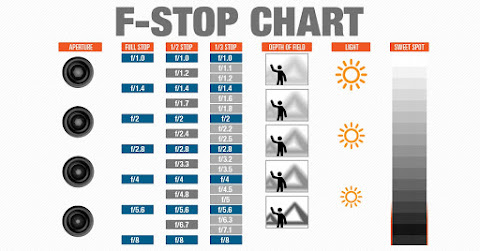Aperture
What is aperture?
Aperture is the setting that controls the depth of field as well as the amount of light that enters your cameras lens. There are three factors to take into account that affect your aperture; focal length, focal distance and f-stop. When using a higher aperture such as f/16, the lens will be more narrow and therefore allow less light in. The higher the aperture is, the deeper the depth of field will be, which means more of the shot will be in focus. Where as when using a lower aperture such as f/2.8, the lens will open more and therefore allow more light in. The lower the aperture is, the shallower the depth of field will be, meaning the foreground of the shot will be in focus but the background will be blurred.
Lower apertures such as f/2.8 are used for mainly close ups where the focus of the viewer needs to on something specific. Medium apertures such as f/8 are used for mid shots and wide shots so as the subject and their actions may be in focus, but the viewer wont lose the main subject in the shot. Higher apertures such as f/16 are used for establishing shots so as the foreground and the background is all fully in focus and visible to the viewer.
F-stop
F-stop is the setting on the camera that allows you to alter the depth of field. Using f-stops of f/16 and higher, the lens becomes more narrow which lowers the amount of light that hits the sensor, whilst this effects the exposure, it also makes the depth of field deeper. Where as using low f-stops such as f/2.8 allows the lens to become wider, letting more light hit the sensor and therefore making the depth of field shallower.
Focal distance
Focal distance is the physical distance between the main subject and the camera. The closer the subject gets to the camera, the shallower the depth of field will be, where as when the subject allows more distance between their-self and the camera, the depth of field will be deeper.
Focal length
The focal length of a lens measures in millimetres, the distance between the optical centre and the camera sensor. Zoom lenses allow you to change focal length; if you increase your focal length, you will have a shallower depth of field. A longer focal length, such as 135mm, will result in a narrow angle of view and will make the subject seem bigger. Whereas a shorter focal length, such as 24mm, results in a wider angle of view and therefore makes the subject look smaller. Angle of view is how much of the scene the lens will capture.


Comments
Post a Comment